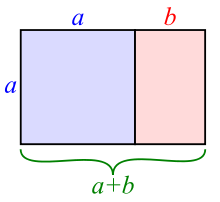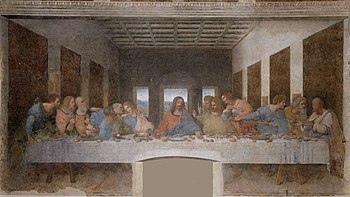Week 2: Math + Art
Last year, I took two calculus classes at UCLA, both with the same professor (Michael Andrews). He is brilliant. Watching him work with numbers and see the fruition of equations in his mind is was something that I admire greatly.
What was most memorable though, was him staring at a series problem towards the end of the quarter, and exclaiming that he could produce a wild musical score from the problem. He then further explained to us that he often used math to create music.
 |
| Series Problem: http://tutorial.math.lamar.edu |
I see a lot of Da Vinci in my math professor. As Vesna informs us in her lecture, Da Vinci was constantly thinking about the cohesive units that create a visual experience. He studied the “geometry of perspective and optical principles of the eye” in order to better understand how the eye makes sense of reality.
 |
| The Golden Ratio: https://upload.wikimedia.org/wikipedia |
According to an article produced by the Mona Lisa Foundation, Leonardo, while intrigued by all types of math, he was particularly consumed by geometry. He employed geometry to create harmony in his pieces. Math propelled him forward.
In Da Vinci’s Mona Lisa, the central figure is drawn according to the golden ratio, which means the rectangles found in her face and body are drawn with the ratio of 1 to 0.618. According to an article produced by Math Central, it is this - the math of the picture - that is most pleasing to the eye.
Da Vinci continually capitalizes on the aesthetically satisfying aspects of math, as seen in The Last Supper. When viewers looks at the painting, they encounter natural perspective. A natural perspective, as stated by Vesna, “reproduces faithfully the relative size of objects depending on their distance.” We like what we see because it is familiar, and grounded in the realness of optical geometry.
 |
| The Last Supper: https://upload.wikimedia.org/wikipedia |
Sources:
"Leonardo and Mathematics." The Mona Lisa Foundation. N.p., 30 June 2016. Web. 15 Apr. 2017.
Glydon, Natasha. "The Mathematics of Art ." Leonardo DaVinci and the Golden Section - Math Central. N.p., n.d. Web. 15 Apr. 2017.
Henderson, Linda Dalrymple. "The Fourth Dimension and Non-Euclidean Geometry in Modern Art: Conclusion." Leonardo17.3 (1984): 205. Web.
Michael Andrews, UCLA. N.p., n.d. Web. 15 Apr. 2017.
American Mathematical Society. N.p., n.d. Web. 15 Apr. 2017.
Melina,
ReplyDeleteI had the same set of ideas going into this week. I thought math and art were two different worlds, and disconnected, kind of like UCLA's campus. After seeing how Da Vinci's used math in some of the most iconic and famous art pieces in history, the two worlds do not seem that far apart. Math was used in ancient art, and it is still used in modern art. Math is very important when it comes to art work because it helps the visual of the painting to the naked eye to be aesthetically appealing. We can to keep looking at the picture because of its symmetry and balance.
For starters, I would just like to give you a hand because 2 calculus classes!! I just know I couldn't do it. I love how you connected what you learned and your professor to Da Vinci. Its great how you were able to explain and show us how Da Vinci used used math in his work.
ReplyDelete